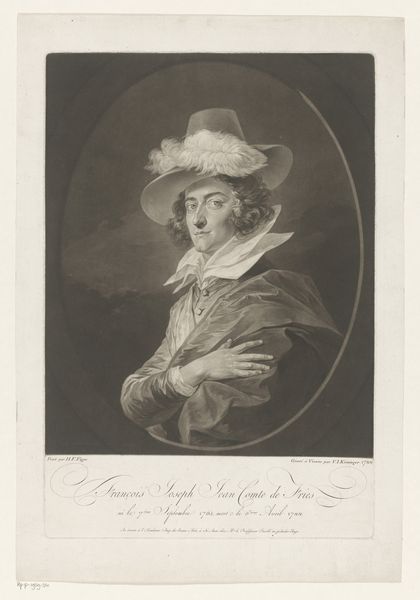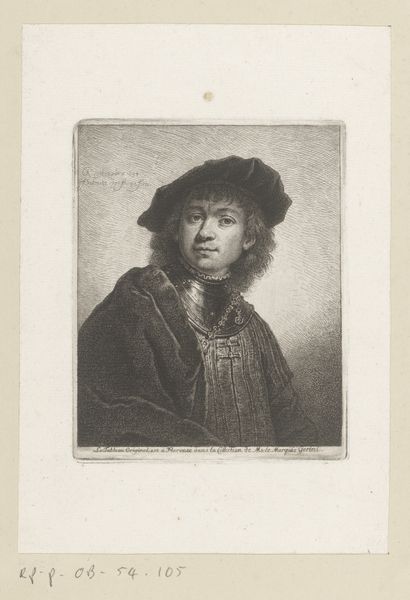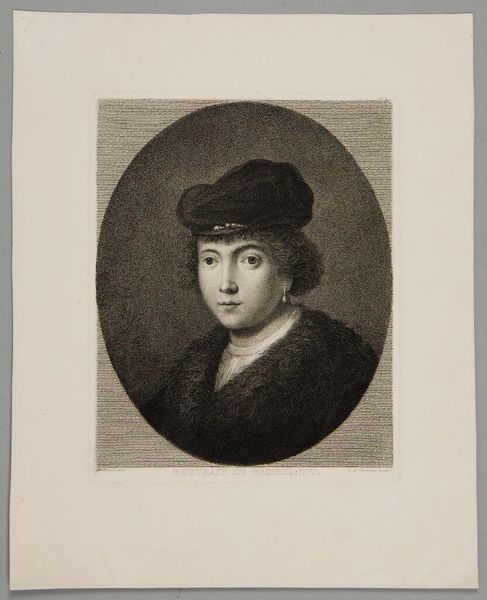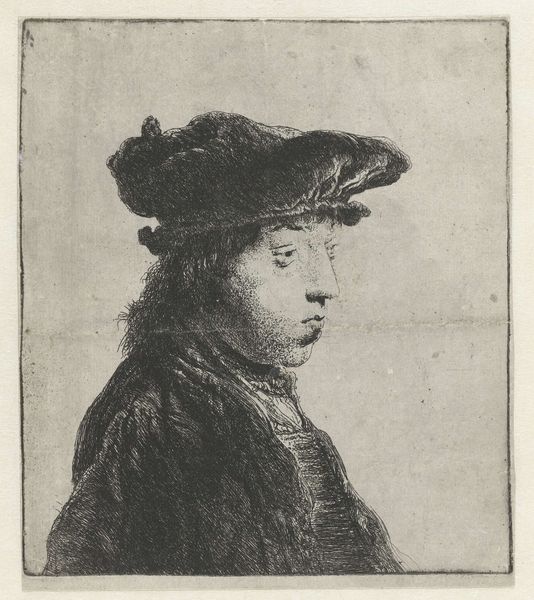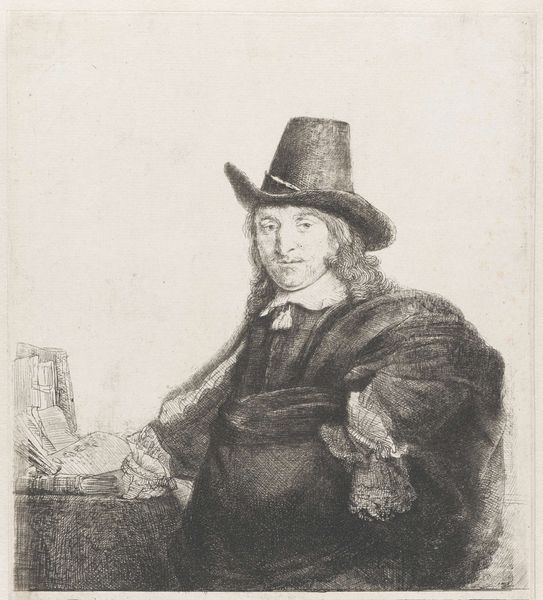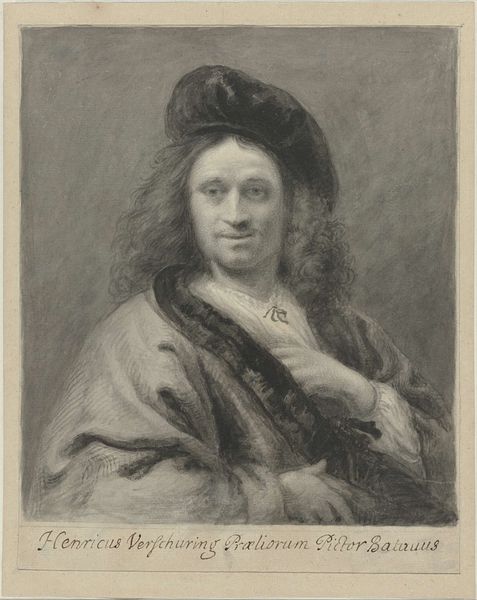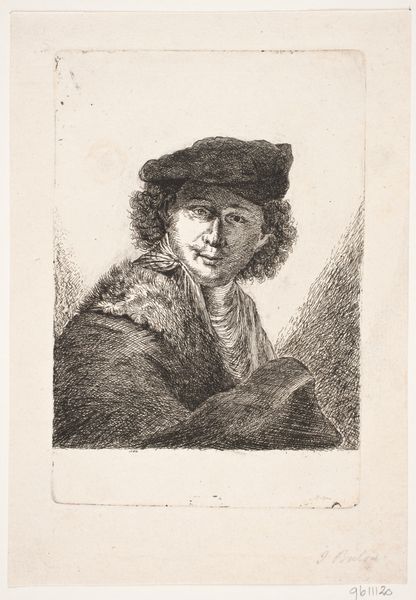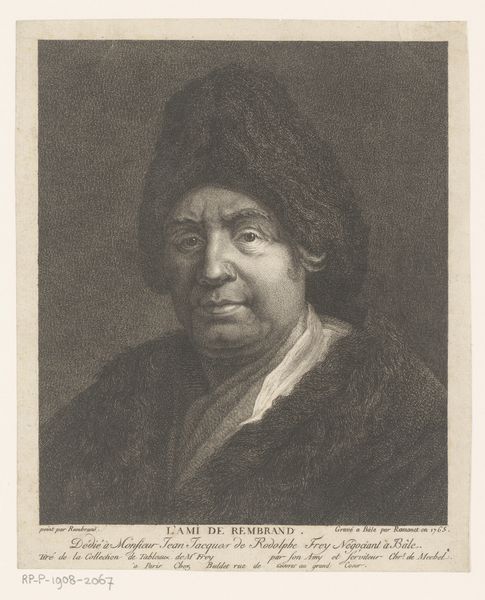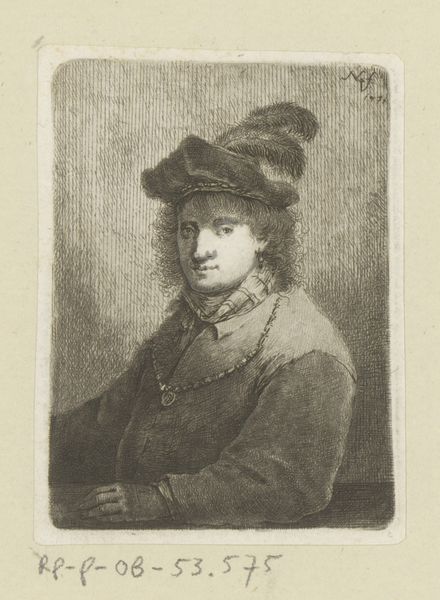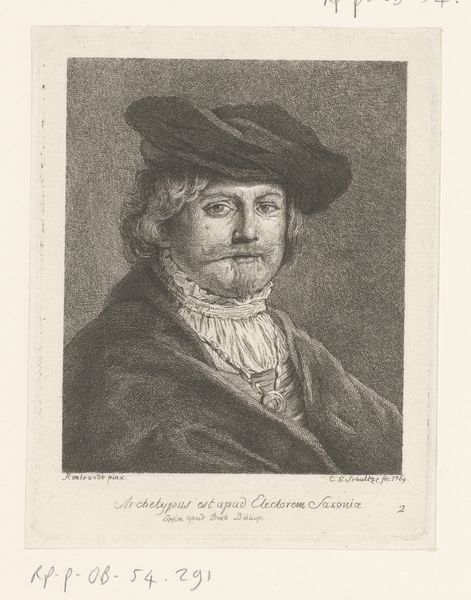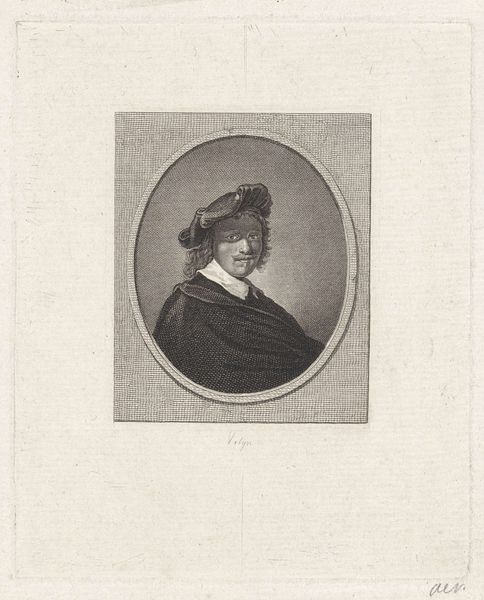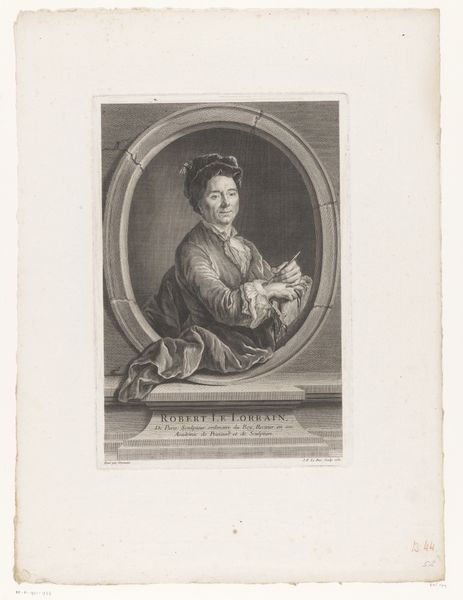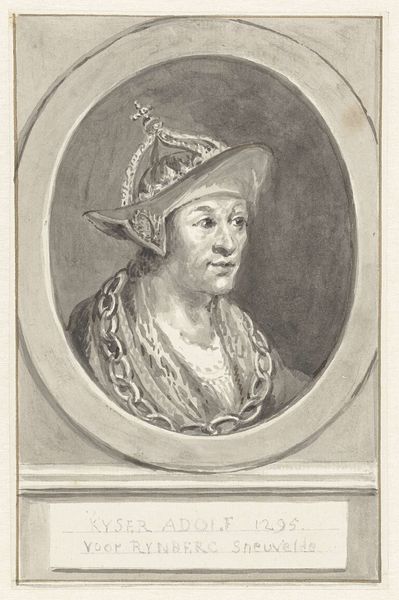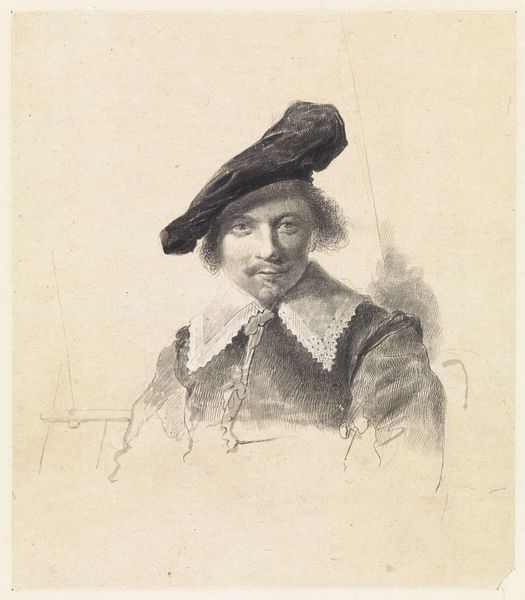
drawing, charcoal
#
drawing
#
self-portrait
#
baroque
#
dutch-golden-age
#
charcoal drawing
#
portrait reference
#
portrait drawing
#
charcoal
#
realism
Dimensions: overall (lunette): 18.2 x 13.2 cm (7 3/16 x 5 3/16 in.)
Copyright: National Gallery of Art: CC0 1.0
Editor: This is Ferdinand Bol’s charcoal drawing, “Rembrandt van Rijn,” from around 1640. I’m struck by the velvety texture of the cloak. What can you tell me about the materials used here and why they might be significant? Curator: Well, considering the era, charcoal wasn't just a preliminary tool; it was a medium with its own inherent value. Look closely – the quality of charcoal, its production, the specific paper it’s laid upon, all of it speaks to artistic labor and accessibility. This wasn’t just about sketching a likeness; it was a conscious choice about artistic practice and, perhaps, a statement on the value assigned to drawing itself. What was the socio-economic status of a drawing compared to painting? Editor: That’s a great point. It’s easy to see charcoal as just a step towards painting, but here it’s the finished product. Did Bol’s choice of material impact how the art world received the piece? Curator: Absolutely. Consider the workshops of the Dutch Golden Age. Drawings like this circulated amongst studios. It aided skill development through tracing and copying but was often viewed separately from the "high art" of painting. Bol, a student of Rembrandt, demonstrates masterful control here. Are we supposed to view this as practice, as an affordable form of art for the masses, or something else? Editor: So, it challenges the typical hierarchy of art forms? It’s not just a study for a painting but a statement in and of itself, perhaps? Curator: Precisely. It prompts us to rethink what constitutes "finished" art and what roles art materials and the associated labour played within 17th century Dutch society. Do we view the artwork through the lens of the elite, or can art be for the wider populace? Editor: I see how a simple material like charcoal opens up this complex discussion. Thanks! Curator: It reveals much about artistic training, class, and production practices in a supposedly ‘golden’ age. Thank you for considering materials first and foremost.
Comments
No comments
Be the first to comment and join the conversation on the ultimate creative platform.
